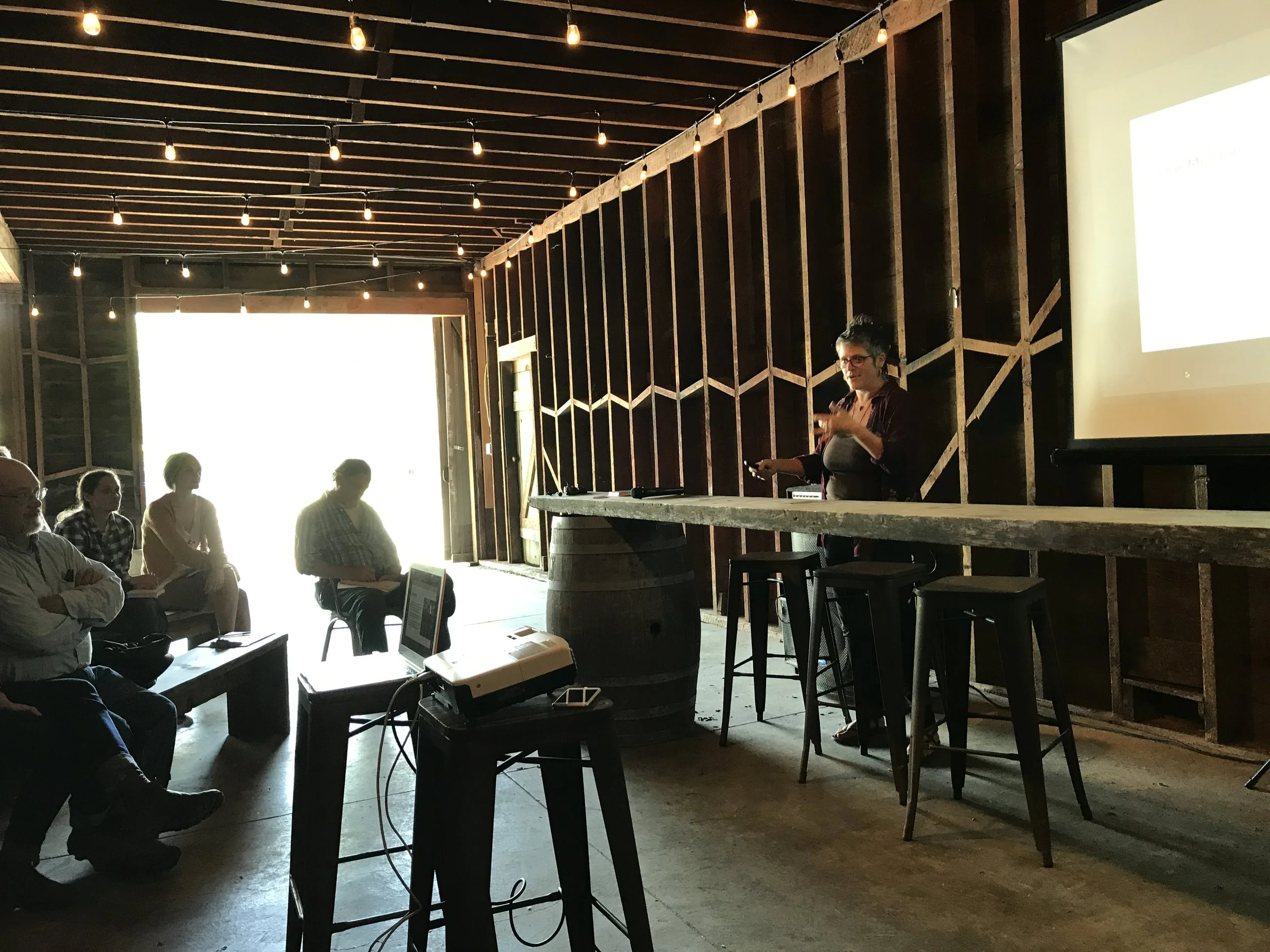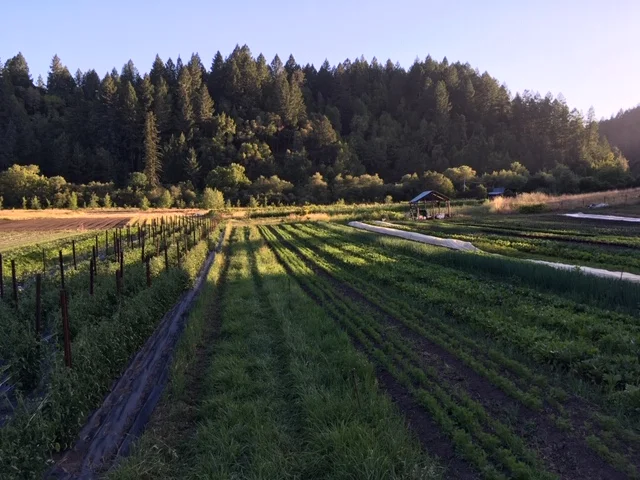In April, Green Valley hosted its Spring Farm Tour as part of Sonoma County Farm Trails Weekend Along Farm Trails. In addition to a tour of the farm that was open to the public, Green Valley hosted a workshop titled Beyond Speculation: Resilient Working Lands and Communities. The workshop sought to present solutions to keeping farmland affordable in the ever-rising real estate markets in the Bay Area and beyond.
Moderated by Green Valley’s Temra Costa, speakers included Cassandra Ferrera of CommonSpace Land Trust, Kendra Johnson, consultant with California FarmLink and California lead for Agrarian Commons, and Cameron Rhudy of Sustainable Economies Law Center. Some highlights of each presentation is as follows:
This slide of Cameron’s shows which parts of the country are experiencing the highest rates of ag land development. With an ever-increasing population and a housing crisis in California, more pressure is being put on our workings lands for development as well as making ag land unaffordable for new farmers for the purposed of growing food.
TEMRA COSTA introduced the workshop as well as talking through the existing model and structure of Green Valley Farm + Mill. This diverse 172-acre property has four member-owners and six houses on site making it a unique property. In addition, there are three active farming operations and an onsite nonprofit in formation.
At a purchase price above what farming livelihoods can afford, the land project makes up for these gaps in monthly rental and use agreement fees for its multitude of spaces. The long term aspiration is to ensure that the land can be perpetually stewarded by those living and working on site. To ensure that housing and land-based livelihoods are accessible for generations to come, Green Valley is exploring a number of potential models to ensure affordability. These models include a community land trust that will be supported by a cooperative management entity that will manage day-to-day operations, as well as a perpetual purpose trust. Cassandra Ferrera and Kendra Johnson serve on the Advisory Board of Green Valley Farm + Mill along with other advisors that are providing input on the project’s governance model with a goal to implement it in 2022.
CASSANDRA FERRERA presented her work with CommonSpace Community Land Trust.
From CommonSpace Land Trust’s website:
A Community Land Trust – CLT – is an entity, as opposed to a place. It is comprised of members, who elect a Board of Directors.
The CLT organization purchases land on which to develop permanently affordable housing. The CLT owns the land, then sells the buildings on the land at below market rate to the residents, who own, manage, and maintain them. The CLT is able to sell at below-market rates because the cost of the land is removed from the sale price. The CLT retains ownership of the land, and provides a 99 year lease of the land to the residents.
Prospective residents must meet certain income requirements to be eligible to live on a CLT property. In general, they must be low income. However, in areas of extreme housing cost inflation (such as Sonoma County), someone with a somewhat higher level of income may be eligible.
It is also possible to be a renter resident on a CLT-owned property. It this case, the CLT would be the owner of the building. However, all management and maintenance responsibilities that apply to owners would apply to renters as well.
When a resident owner decides to move, the sale price of their unit is not determined by the marketplace. Instead, there is a calculation based on yearly inflation which determines the price. In this way, the housing remains affordable. The same applies to rental units.
CAMERON RHUDY presented organizational structure options for new models such as Agrarian Trust/Agrarian Commons, East Bay Permanent Real Estate Cooperative, and the various forms of governance that can be put into place to achieve these goals.
KENDRA JOHNSON presented a few case studies of farms that have put their land into conservation through alternative models as well as the work of Agrarian Commons and California FarmLink. Her talking points focused on farm viability and the ways to ensure viable rural livelihoods.










